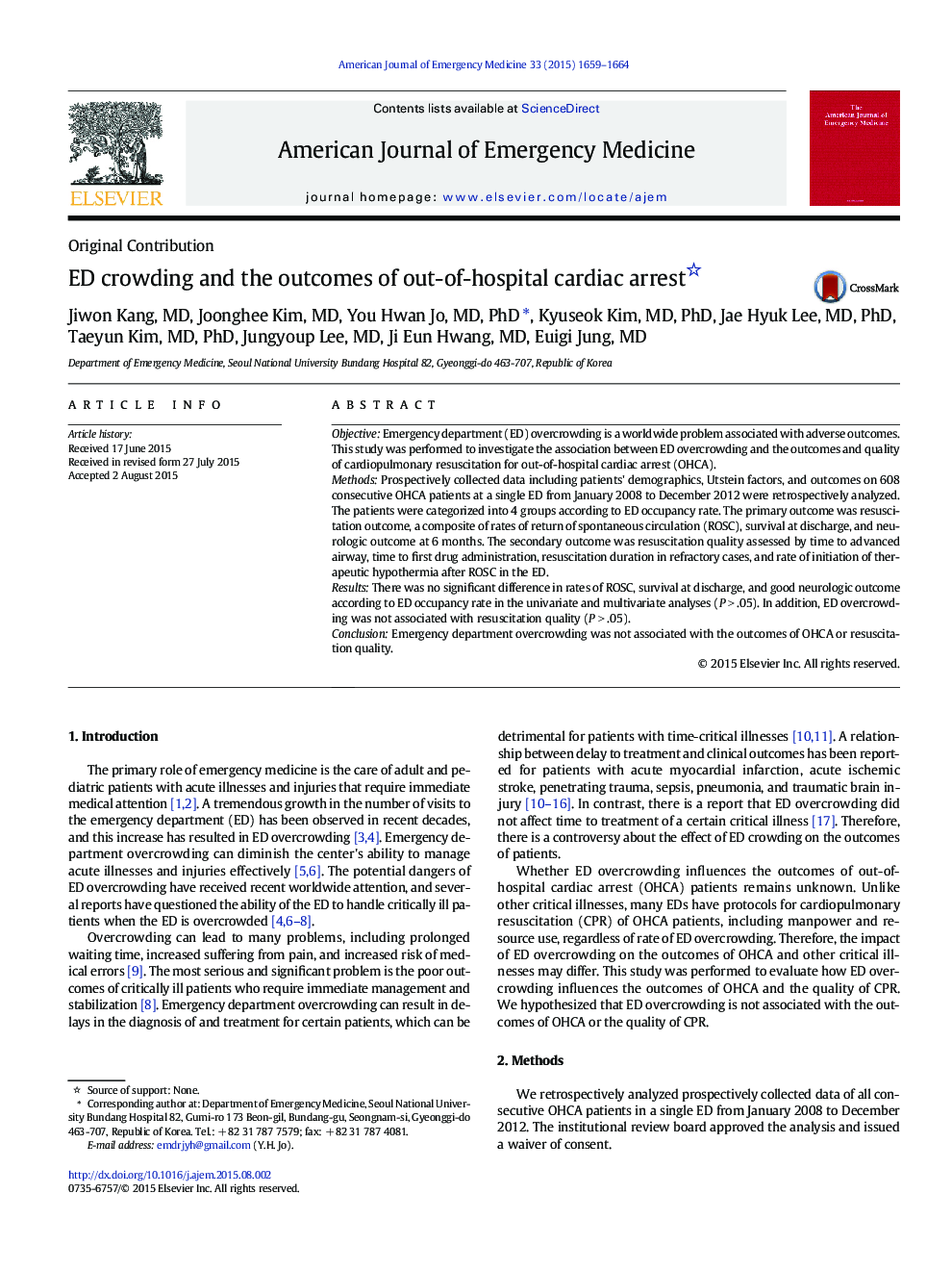| Article ID | Journal | Published Year | Pages | File Type |
|---|---|---|---|---|
| 3223656 | The American Journal of Emergency Medicine | 2015 | 6 Pages |
ObjectiveEmergency department (ED) overcrowding is a worldwide problem associated with adverse outcomes. This study was performed to investigate the association between ED overcrowding and the outcomes and quality of cardiopulmonary resuscitation for out-of-hospital cardiac arrest (OHCA).MethodsProspectively collected data including patients' demographics, Utstein factors, and outcomes on 608 consecutive OHCA patients at a single ED from January 2008 to December 2012 were retrospectively analyzed. The patients were categorized into 4 groups according to ED occupancy rate. The primary outcome was resuscitation outcome, a composite of rates of return of spontaneous circulation (ROSC), survival at discharge, and neurologic outcome at 6 months. The secondary outcome was resuscitation quality assessed by time to advanced airway, time to first drug administration, resuscitation duration in refractory cases, and rate of initiation of therapeutic hypothermia after ROSC in the ED.ResultsThere was no significant difference in rates of ROSC, survival at discharge, and good neurologic outcome according to ED occupancy rate in the univariate and multivariate analyses (P > .05). In addition, ED overcrowding was not associated with resuscitation quality (P > .05).ConclusionEmergency department overcrowding was not associated with the outcomes of OHCA or resuscitation quality.
